Key takeaways:
- Selecting the right app development tools is crucial; understanding their unique features can significantly impact project success.
- Prototyping is essential for visualizing ideas early, allowing for user feedback that can refine concepts and enhance collaboration.
- Common pitfalls in prototyping include a lack of user involvement, overcomplicating designs, and emotional attachment to initial ideas, which can hinder progress.
- Iterative feedback, user personas, and low-fidelity prototypes are effective strategies for improving the prototyping process and fostering creativity.

Understanding app development tools
When I first dove into app development, I was overwhelmed by the sheer number of tools available. Each one promised to simplify the process, but I quickly realized that the right tool could make or break my project. Selecting the best platform often felt like solving a puzzle, and I wondered how others navigated this complex landscape.
As I experimented with various app development tools, I discovered that understanding their unique features was crucial. For instance, one tool excelled at rapid prototyping, which I found invaluable for testing ideas quickly. But I recall another occasion where a more robust option was needed, leading to frustrating delays because I hadn’t done my homework on compatibility. It made me reflect: how often do we overlook the importance of selecting the right tool for the task at hand?
Through these experiences, I learned that not all app development tools are created equal, and their effectiveness can vary significantly based on the project’s specific needs. Have you ever faced a situation where the wrong tool derailed your progress? I know I have, and it taught me the importance of research and consideration. By understanding the strengths and weaknesses of each option, we empower ourselves to make informed decisions that propel our projects forward.
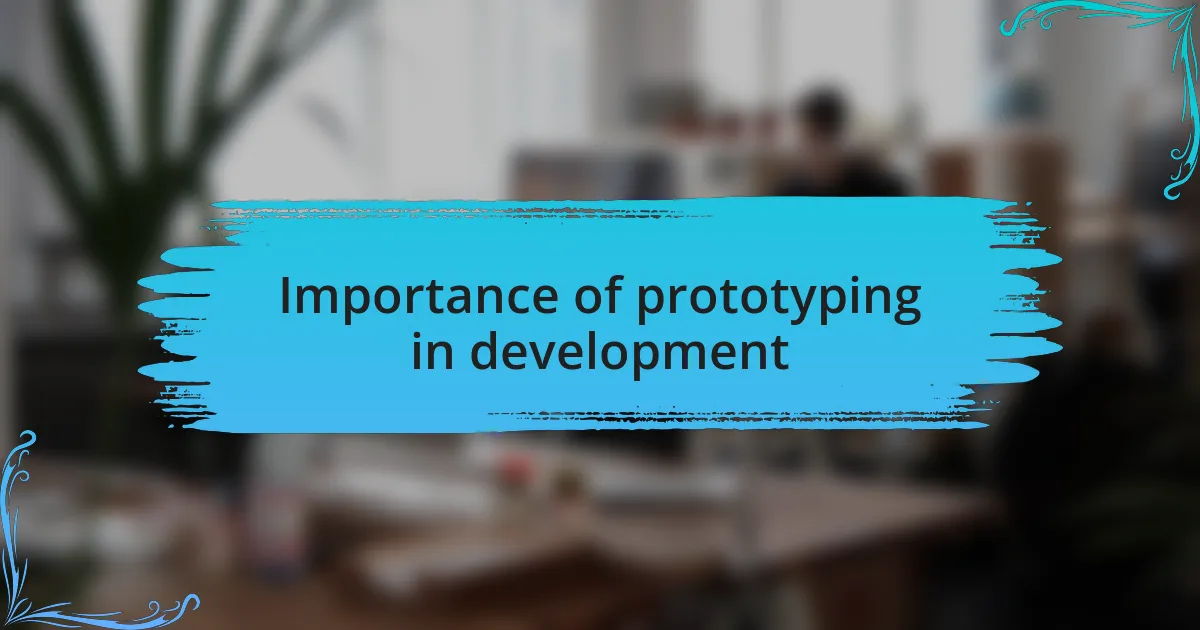
Importance of prototyping in development
Prototyping plays a pivotal role in development by allowing me to visualize ideas before investing significant time and resources. I’ve walked down the path of building complete features only to find out later that the design didn’t resonate with users. Each time, I learned that simply sketching or creating a prototype could save countless hours and lead to more user-centric solutions.
One particular project comes to mind where prototypes helped refine my concept early on. I crafted a basic version of the app interface and shared it with potential users. Their immediate feedback was eye-opening; they pointed out crucial aspects I hadn’t considered. Without that stage, I might have wasted valuable development time on a direction that wasn’t aligned with user expectations. Have you ever considered how early-stage feedback could shift your project’s success?
Moreover, using prototypes fosters collaboration within a team. In my experience, showing a tangible model often ignites creativity among team members, sparking discussions that can elevate the project. It’s fascinating how a simple prototype can transform silence into dialogue, ultimately enriching the final product. The lesson is clear: engaging everyone early on through prototyping not only aligns the vision but also enhances overall communication and buy-in.
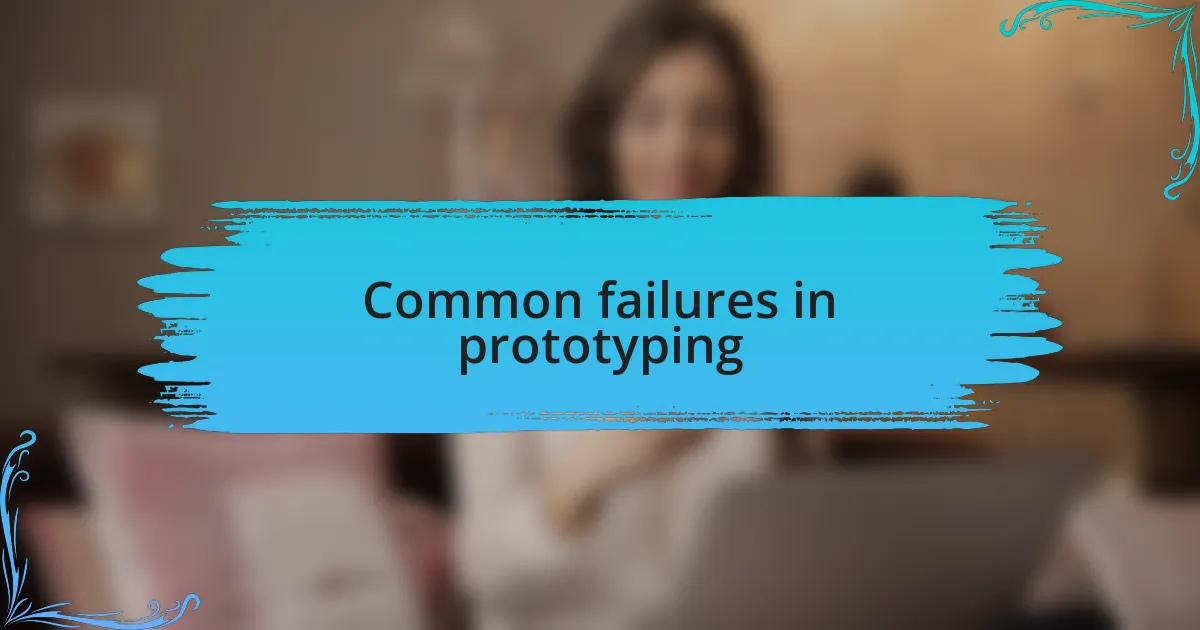
Common failures in prototyping
Common failures in prototyping often arise from a lack of user involvement in the early stages. I once invested weeks creating a sleek prototype based solely on my assumptions, only to discover during testing that users found it confusing. This taught me the value of inclusivity; asking users early on transforms the prototype from a solitary vision into a collective one that meets actual needs.
Another common pitfall is overcomplicating the prototype itself. Early in my career, I made the mistake of packing too many features into a prototype, thinking it would showcase the product’s potential. Instead, it overwhelmed users and clouded their feedback. This experience was eye-opening; minimalism can often lead to more constructive insights and a clearer direction.
Moreover, an emotional attachment to a prototype can stifle necessary iterations. I vividly remember presenting a prototype that I was particularly proud of, only to be met with critique from team members. Initially, I felt defensive, but I realized that this feedback was crucial for improvement. Have you ever held onto an idea so tightly that you missed the opportunity for growth? It’s essential to embrace flexibility and allow room for changes, even when it feels uncomfortable.
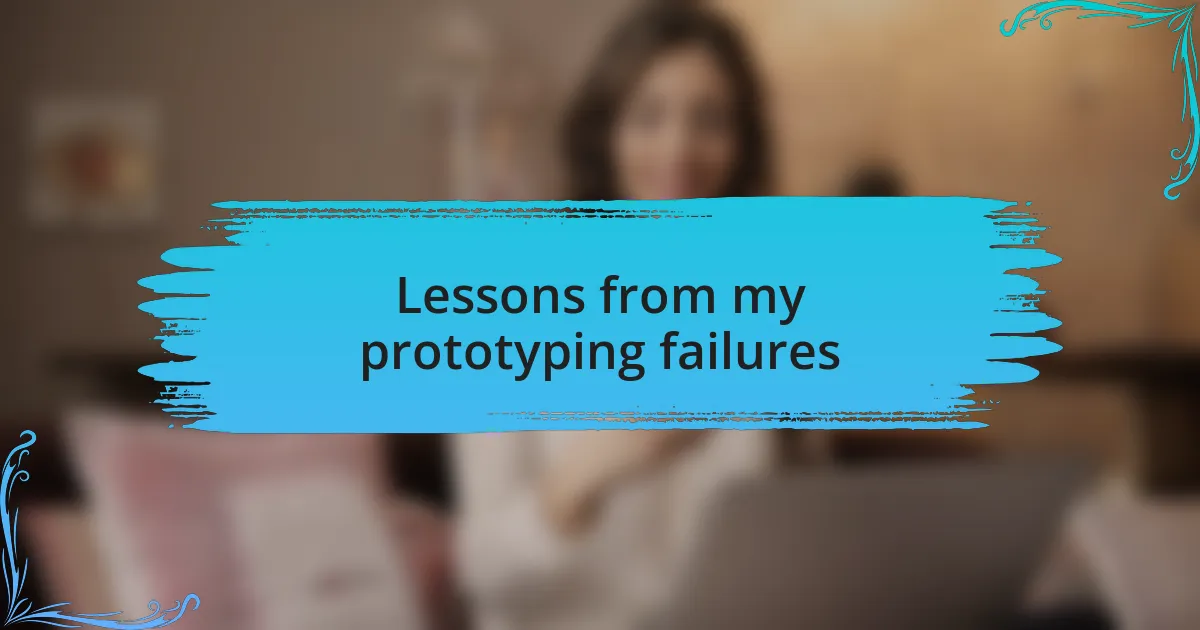
Lessons from my prototyping failures
One of the most profound lessons I learned from my prototyping failures is the importance of iterative feedback. Early on, I created a prototype without revisiting it after initial drafts. I vividly recall a user testing session where participants simply didn’t understand the navigation. It’s a stark reminder that the first version is not the final version; continuous refinement is key. Have you ever looked at your work and realized it didn’t communicate what you intended?
Another critical insight came from the realization that assumptions can lead you astray. I once built an entire prototype based on what I thought users wanted, completely disregarding actual user preferences. When I finally shared it, I was met with silence rather than enthusiasm. This taught me the essential practice of validating ideas through user research before diving into development. Isn’t it fascinating how our perceptions can cloud reality?
Lastly, I learned that it’s okay to fail and, in fact, essential. I remember feeling disheartened after a prototype bombed during a pitch. Yet, reflecting on that experience, I found it pushed me to innovate further. Each failure felt like a stepping stone rather than a stumbling block. How often do we let fear of failure hold us back from that next big idea? Embracing failure is really about nurturing a growth mindset, which is crucial for any prototyping journey.
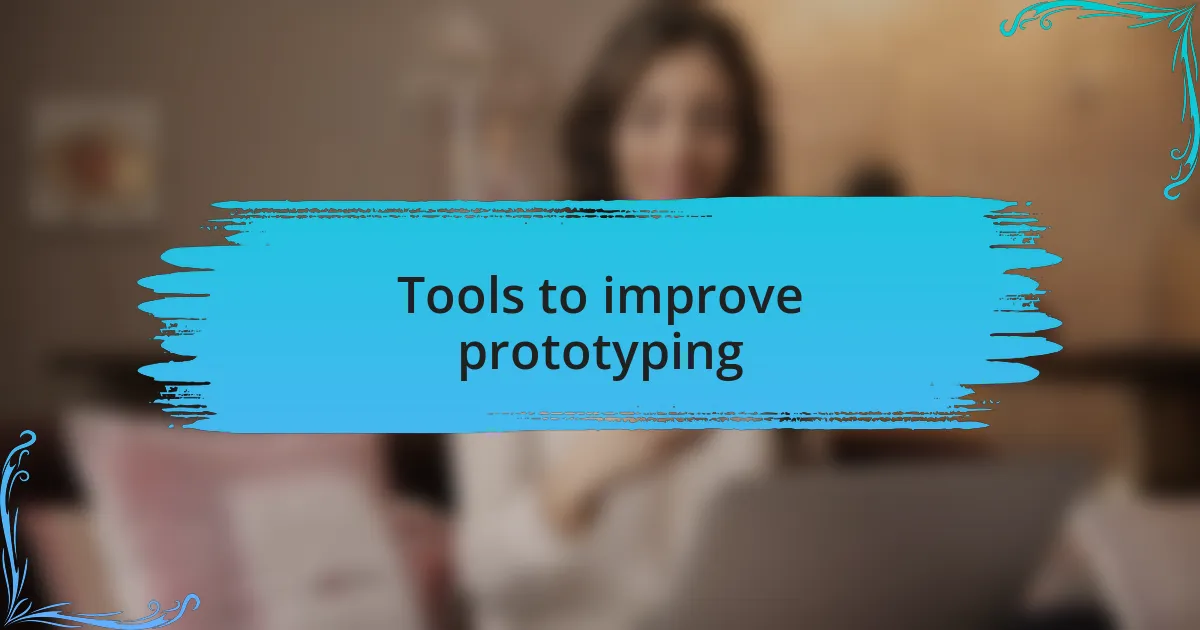
Tools to improve prototyping
When I first struggled with prototyping, I discovered the power of collaboration tools like Figma. It allowed me to create designs and gather real-time feedback from my team. I remember feeling a sense of relief when we could highlight issues together instantly; it turned a solitary task into a dynamic discussion. Have you ever felt that synergy when brainstorming with others?
Additionally, using tools like InVision transformed my prototyping process in unexpected ways. I recall a time when I created a clickable prototype that mimicked the final product closely. It was exhilarating to watch users interact with it during a testing session. Their reactions—both positive and negative—provided insights I could have never anticipated. How do you think your approach would change if you could visualize ideas in a more engaging manner?
Another essential tool in my arsenal is Miro, especially when it comes to mapping out user journeys. I vividly remember the clarity I gained from visually documenting the steps users take. It highlighted potential pain points I would have overlooked otherwise. Isn’t it insightful how mapping things out can reveal the underlying flow that informs patient experience?
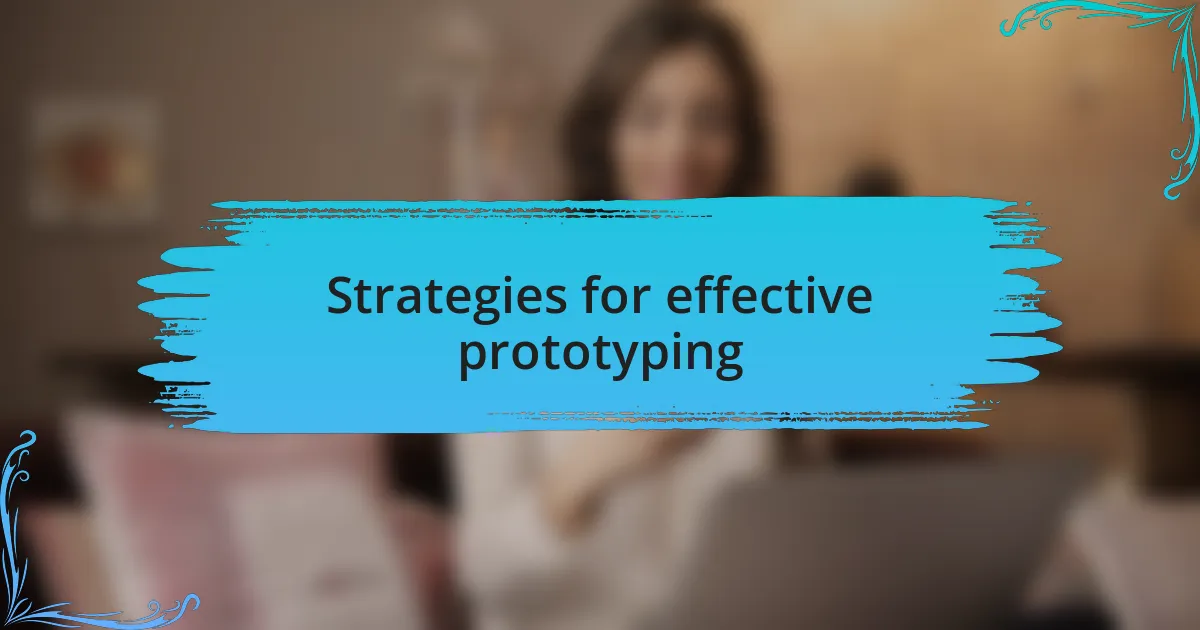
Strategies for effective prototyping
One of the best strategies I’ve embraced is iterative prototyping. When I first implemented this approach, I started breaking down my prototypes into smaller, manageable segments. I still remember the first time I received user feedback on my initial draft; it felt like a revelation. Iterating based on real user interactions not only improved the design but also boosted my confidence in the final product. Have you ever noticed how small tweaks can lead to major breakthroughs?
Another tactic that greatly enhanced my prototyping was the inclusion of user personas. Writing these detailed profiles helped me connect more deeply with my target audience. I vividly recall a brainstorming session where I personified a specific user; it radically shifted my design perspective. Suddenly, I wasn’t just creating for ‘users’—I was creating for Jenny, a busy mom who needed a seamless experience. Doesn’t it feel more meaningful when you can relate your work to real people?
Lastly, I found that developing low-fidelity prototypes helped me focus on concept rather than perfection. Early in my career, I felt the urge to create polished designs, but I learned that sketching simple wireframes facilitated quicker feedback. The excitement of transforming rough sketches into something functional reminded me that the essence of prototyping lies in collaboration and exploration. How liberating is it to know perfection doesn’t have to be the starting point?

Applying lessons to future projects
When I reflect on past prototyping failures, one recurring lesson stands out: embracing the value of flexibility. There was a time when I stubbornly clung to ideas that I initially thought were brilliant. However, after a particularly frustrating project that didn’t resonate with users, I learned that adaptability is key. Why hold onto a concept that isn’t working when there’s an opportunity to pivot in a more effective direction?
Another important insight I gained was the significance of documentation. In one project, I neglected to keep track of the reasons behind certain design choices. Later, when faced with questions from developers, I found myself scrambling for explanations. That experience taught me the power of thorough documentation as a tool for ensuring clarity and continuity in future projects. How often have we rushed through this phase only to regret it later?
Looking ahead, I also realized the importance of fostering a culture of open feedback. Early in my career, I hesitated to ask for critiques from peers, fearing it would unveil weaknesses. But as I began inviting honest input, the collaborative spirit transformed my designs for the better. Isn’t it refreshing when vulnerability leads to innovation? Each lesson I’ve gleaned from previous missteps has shaped my approach to future projects, allowing me to foster a more refined and user-centric mindset.